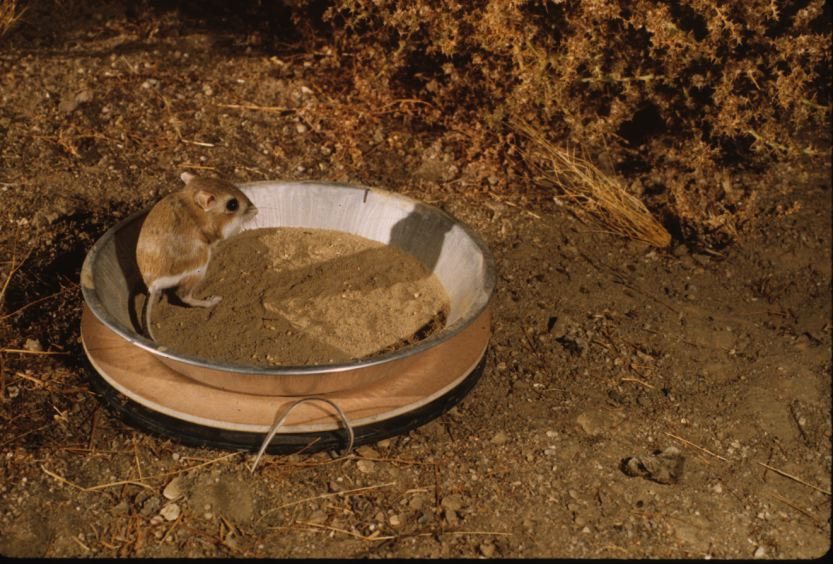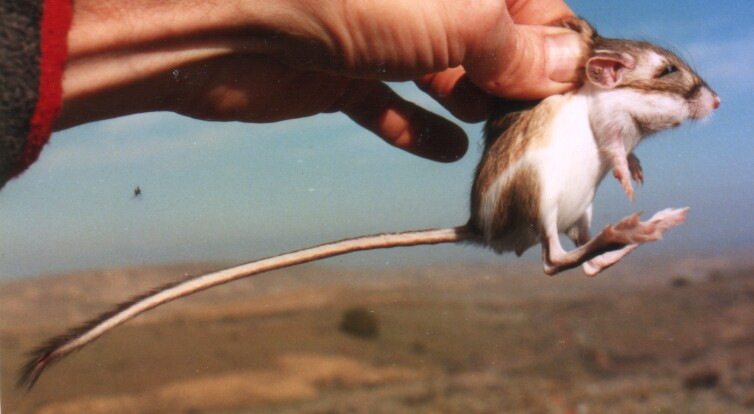At the southern end of the Central Valley in California is a community of threatened species that survives in isolated patches of habitat. Some of what has not been sprayed by pesticides or paved is home to the short-nosed kangaroo rat.

This mouse-sized threatened species is more like a squirrel than a rat. It has a fur-covered tail and metabolizes almost all of its water needs from dry seeds. Its kidneys are over 30 times more capable than ours.
After 2 years of trying to get a study permit from State and Federal officials, I was allowed to radio-collar 5 individuals, 2.5 of each sex I suppose. When later I was refused permission to live-trap and release individuals, I had to come up with a study plan that relied on passive technology. Origami helped me think outside the box. Just as features that are close to each other are sometimes folded from disparate parts of a square, I needed to connect with other disciplines to solve this problem. An elevator that didn’t work at the California Fish and Game Department in Sacramento provided the spark. What makes elevators work in the first place? Elevator buttons are passive resistors. There is a linear relationship between the pressure applied to them and changes in resistance of the electrical current running through them. I put three of these buttons under a tray filled with seeds baked in desert soil, and then attached 48 of these trays with kilometers of wire to a data logger that kept track of changes in each tray’s resistance. Every time a kangaroo rat hopped on or off a tray, the data logger recorded the duration and time of this event.

Armed with this data I could vary where I placed trays (in the open or under shrubs), whether the trays had seeds or not, and what happened when owls and foxes entered the study site. Origami thinking saved my dissertation!


